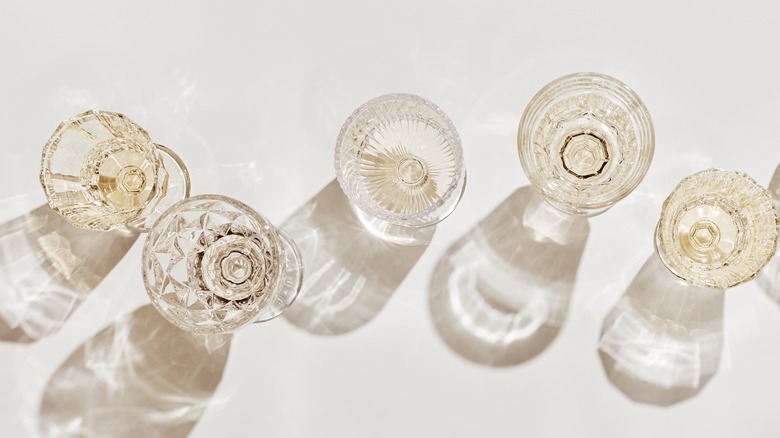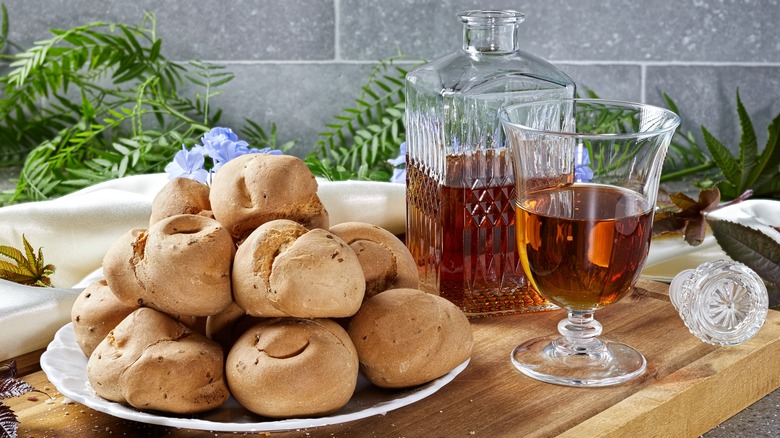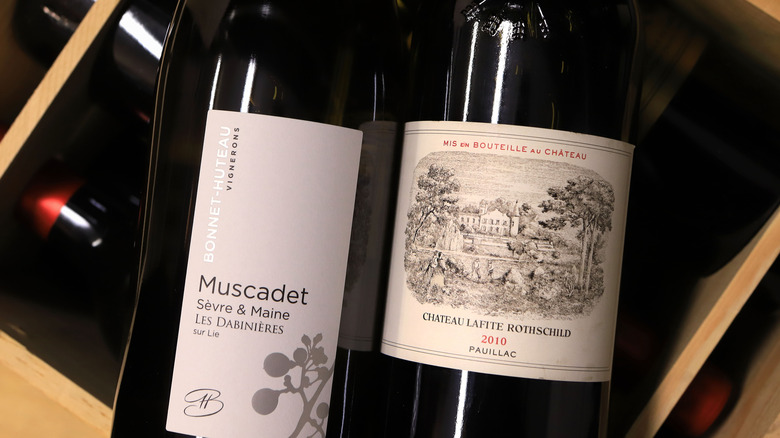What's The Difference Between Muscat And Muscadet Wine?
Part of what keeps learning about wine interesting is that there are so many different varietals and styles out there. Yet, that's also what make's fully grasping its vast world so tricky, especially when certain nomenclature sounds similar. If you've ever come across Muscadet and thought that it was just another moniker for Muscat (much like Moscatel or Moscato), we wouldn't blame you. Yet, despite their similar names, this isn't one of those "you say tomato, I say 'tomahto'" situations.
Muscadet wine shouldn't be confused with the wine and grape family Muscat (not to mention the muscadelle and muscadine varieties), but what makes the two so different from one another? Though their closely-spelled names can create some confusion, besides both being wines and making poor candidates for long-term cellaring, the two couldn't be more contrary. While we're here to help you dive deeper into what makes each wine unique, when in doubt, the best way to remember their differences is that Muscat is typically sweet, whereas Muscadet is typically dry. But that's not all.
Muscat, a (typically) sweet wine
A white grape from the Mediterranean, about 200 varieties fall into the Muscat grape family, with the most common being the Muscat Blanc à Petits Grains and the Muscat d'Alexandrie. Muscat Blanc is used widely to make French wines, as well as Italian Moscato, where Alexandrian Muscat is often used to make Spanish and Portuguese Moscatel. But this class of grape gets around, known to Sicilians as Zibibbo, to Germans as Muskateller, the Greeks as Moschato Spinas, Australians as Lexia, and to South Africans as Hanepoot.
Capable of producing still, semi-sparkling, sparkling, dessert, and even fortified wines, Muscat grapes are naturally saccharine and mildly acidic, which is why they tend to be used to make wines that fall on the sweeter end of the spectrum. However, when winemakers introduce yeast to stills, it converts most of the grape's sugar into alcohol, to produce the drier styles typical of Alsace.
Despite a range in terroir and vinification processes, wines made from Muscat tend to have an aromatic profile that's both citrusy and floral-forward. Honeysuckle and orange blossom dance along the nose, while mandarins and lemons grace the palate. Typically light-bodied with a low alcohol level, Muscat is best paired with fresh fruits and veggies, or even served with a cheese course or as part of dessert.
Muscadet, a dry wine
Muscadet is not the name of a grape but rather an appellation. Produced in France's Loire Valley, Muscadet describes a dry style of wine made from the white Melon de Bourgogne grape. While Muscadet can encompass a number of wines produced in the region, the most prestigious appellations include the Muscadet Côtes de Grandlieu, Muscadet Coteaux de la Loire, and Muscadet Sèvre-et-Maine.
Given the grape's neutral profile, Muscadet is often aged using the sur lie technique — in which wine is kept in contact with dead yeast cells post-fermentation — to create a creamier wine with a more complex, yeasty flavor. Barrel fermentation is another way to impart a bit of depth, as is an aging period to allow more citrus pith and unripe green fruits to come through.
Teeming with minerality, the Melon de Bourgogne grape is far from fruity and the Muscadet it produces has a saline and almost briny quality thanks to the nearby sea air. Clean and crisp with vibrant notes of lemon and lime, the light-bodied wine has a high level of acid and a slightly higher alcohol level when compared to sweeter Muscat wines. A great palate-cleanser, Muscadet is a perfect match for seafood, whether served alongside decadent moules frites or a filet of fish drizzled in beurre blanc.
Totally unique in its profile and place of production, mistaking Muscadet (dry, mineral, and French) for Muscat (sweet, fruity, and international) is sure to become a thing of the past!


